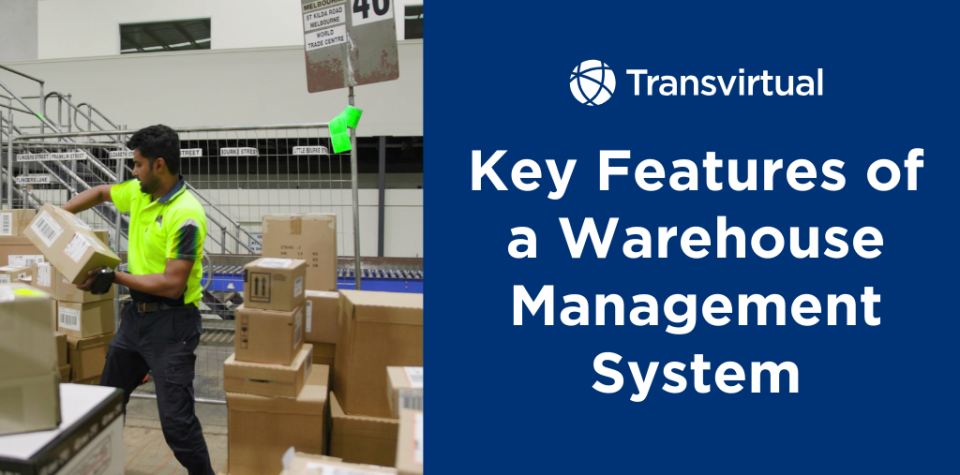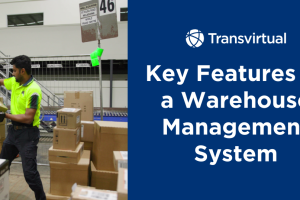When selecting a warehouse management system (WMS) for your business, it’s essential to consider the features that could impact your warehouse operations—from inventory management to real-time visibility.
In areas with vast distances and reliance on international supply chains, managing inventory, shipping, and warehouse operations can become complex and costly.
Ecommerce businesses and third-party logistics (3PL) operators need warehouse management systems that not only handle these complexities but also integrate seamlessly with existing warehouse processes and enterprise resource planning (ERP) systems.
A reputable WMS should streamline operations while providing a solid return on investment.
That all said, what should you prioritise in a WMS? Let’s explore the key features you need to consider to ensure the system is right for your business and supports your supply chain processes.
What is a Warehouse Management Software?
Ecommerce has significantly increased the demand for more efficient warehouse management, as online retailers must quickly fulfill a high volume of orders.
In Australia, this challenge is intensified because many of the products sold—or the components used to manufacture them—are imported. Efficient warehouse management is essential to handle these imports, especially with ongoing disruptions in global supply chains due to economic and geopolitical factors.
So effectively managing the inventory, shipping and customer care for your 3PL clients requires an effective warehouse management system.
A Warehouse Management System (WMS) is a sophisticated software application designed to manage and control daily warehouse operations.
From receiving and storing inventory to picking, packing, and shipping orders, a WMS is integral to optimizing warehouse processes. In the broader context of supply chain management, a WMS plays a crucial role by providing real-time visibility into inventory levels, warehouse operations, and shipping processes. This real-time data empowers businesses to make informed decisions, respond swiftly to market changes, and ultimately, improve customer satisfaction. By streamlining warehouse processes, a WMS helps reduce operational costs and enhances overall warehouse efficiency.
Benefits of a Warehouse Management System
Implementing a WMS can revolutionize your warehouse operations, bringing a multitude of benefits:
-
Improved Inventory Accuracy: With real-time inventory tracking, businesses can significantly reduce stockouts and overstock situations, ensuring inventory accuracy.
-
Increased Warehouse Efficiency: A WMS optimizes warehouse processes, leading to higher productivity and faster order fulfillment.
-
Enhanced Customer Satisfaction: Faster and more accurate order fulfillment translates to happier customers and better business relationships.
-
Reduced Labor Costs: By automating various warehouse tasks, a WMS helps in better workforce management, reducing labor costs.
-
Improved Supply Chain Visibility: Enhanced visibility into the supply chain allows for better collaboration and more efficient operations.
-
Scalability and Flexibility: A robust WMS can adapt to changing business needs, supporting growth and scalability.
Choosing the Best Warehouse Management System
Before adopting a new warehouse management system, ensure it will deliver significant benefits for your business. Keep in mind that these systems require capital investment and ongoing operating costs.
The biggest expense, however, will be making sure your warehouse team and management remain committed and engaged. Their drive is key to setting up the system correctly, using it properly, and keeping it regularly updated.
How Do I Select the Best WMS Solutions?
Implementing a WMS is a tactical decision that not only needs to target your 3PL company’s specific requirements for automating your warehousing and distribution systems. It also needs to offer a good return on investment (ROI). There’s no point in investing in a system that does not function exactly as you need it to.
These are the steps you can take to evaluate different WMS systems in order to determine which one will work best for your business.
1. Analyse your existing system
Chances are, you already have an existing warehouse management system that you’re looking to upgrade or replace.
Have a critical look at your current WMS. Does it measure up to your requirements and will it cope with future changes? These are important factors to consider, especially if you can see significant growth on the horizon and need to plan accordingly.
2. Warehouse management system features to look out for
When evaluating a Warehouse Management System (WMS), it’s important to ensure it includes essential features to manage inventory levels and prepare items for fulfillment. Here are the top seven features you should look for:
-
Inventory tracking: Real-time inventory visibility for stock levels and locations.
-
Order fulfillment: Manages entire order process from receipt to shipment.
-
Picking : Streamlines item selection for efficient order processing.
-
Receiving and putaway: Handles inbound shipments and directs items to storage.
-
Barcode/RFID integration: Enables accurate, rapid data capture for operations.
-
Reporting and analytics: Provides insights into warehouse performance.
-
System integration: Connects with ERP, transportation management systems, and other business systems.
These core features are essential for a strong WMS, targeting inventory accuracy and enhancing customer and supplier relationships.
3. Look for features that enhance your warehouse operations
A good warehouse management system needs to be highly configurable in order to slot into your existing systems and to cope with future changes in demand, logistics and customer numbers.
Look for a system that includes end-to-end 3PL management and supports multiple warehouses with real-time inventory data.
These are also a few of the things you should look for, including:
-
Is it mobile-friendly? Most of our day-to-day interactions are done on the small screen these days. So make sure that the WMS you choose operates flawlessly on mobiles.
-
Is the dashboard customisable and does it have a user friendly interface? You want your WMS to look good, be uncluttered and be a pleasure to use.
-
Does the Customer Login Portal not only look great but is simple to use and the input data flows seamlessly into the WMS.
-
Can it efficiently manage inventory data across multiple warehouses, providing a unified view of stock levels and movements?
Remember, your warehouse management system should improve warehouse efficiency. You’ll want to quickly onboard warehouse staff and boost productivity from day one.
4. Evaluate the development capabilities of the vendor
Check out the development history of the software your WMS provider has. Does their system support ongoing development and can this be done without adversely affecting your day-to-day operations?
As Ferris Bueller rightly said: “life moves pretty fast.” And so does warehousing technology. So your chosen WMS has to be able to move with the times and keep up with changes in the fast-moving world of logistics, supply and demand.
Core Features of a Warehouse Management System
A robust WMS typically includes the following core features:
Inventory Tracking and Control
Inventory tracking and control is the backbone of any effective WMS. This feature ensures businesses can accurately track and manage their inventory levels in real-time. Key components include:
-
Real-time Inventory Visibility: Always know the exact stock levels and locations.
-
Automatic Inventory Tracking and Updating: Keep inventory data up-to-date without manual intervention.
-
Inventory Reporting and Analytics: Gain insights into inventory trends and performance.
-
Support for Multiple Inventory Locations and Warehouses: Manage inventory across various locations seamlessly.
Receiving and Put-away Process
The receiving and put-away process is a critical step in warehouse operations. A WMS can streamline this process by:
-
Automating the Receiving Process: Speed up the intake of goods with automated systems.
-
Providing Real-time Visibility into Inventory Levels: Know what’s coming in and where it’s going.
-
Optimizing Put-away Locations: Reduce travel time and improve storage efficiency.
-
Supporting Barcode Scanning and RFID Technology: Enhance accuracy and speed with advanced tracking technologies.
Order Picking, Packing, and Fulfillment
Optimizing the order picking, packing, and fulfillment process is essential for efficient warehouse operations. A WMS can help by:
-
Providing Real-time Visibility into Inventory Levels and Order Status: Ensure orders are fulfilled accurately and promptly.
-
Optimizing Picking Routes: Reduce travel time within the warehouse for faster order processing.
-
Automating the Packing and Shipping Process: Streamline the final steps of order fulfillment.
-
Supporting Multiple Shipping Carriers and Transportation Management Systems: Integrate seamlessly with various shipping options for flexibility and efficiency.
By focusing on these core features, a WMS can significantly enhance warehouse performance, ensuring that your operations are not only efficient but also scalable and adaptable to future needs.
Get Ahead of the Pack With the Best WMS
Your 3PL business is the best in the game. At least, it can be if you choose the best WMS package. With optimised pick and pack workflows, seamless software integration and real-time stock and inventory level tracking, Transvirtual’s WMS package offers state-of-the-art solutions for your 3PL business.
Our Warehouse Management System offers end-to-end 3PL management, operates extremely well on mobiles, and integrates with our transportation management system for seamless data sharing.
So get in touch with our team and join the thousands of companies who are delivering better customer satisfaction with Transvirtual.



